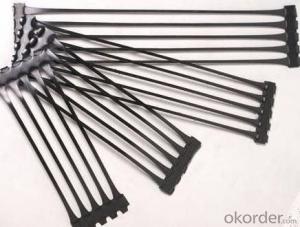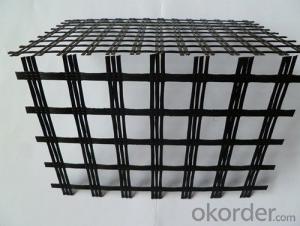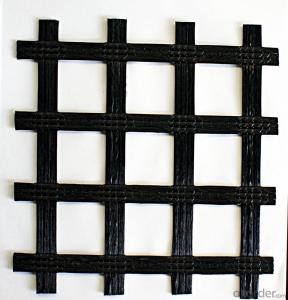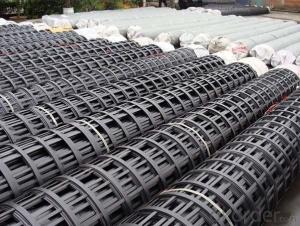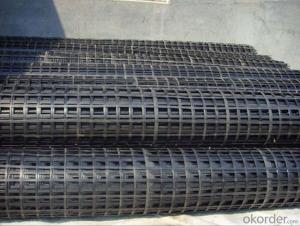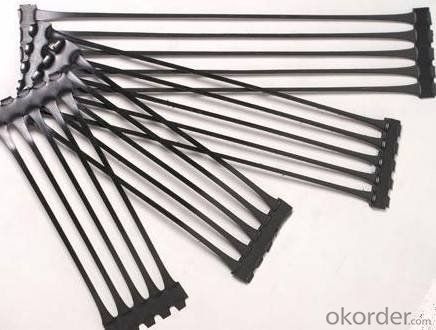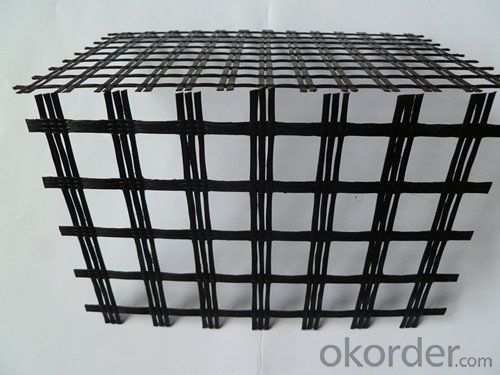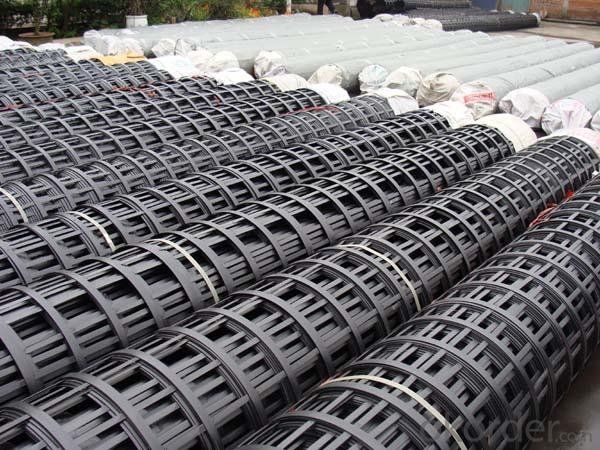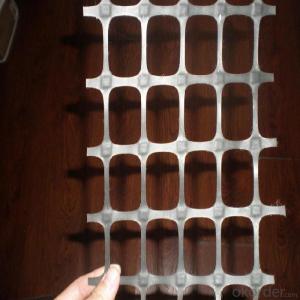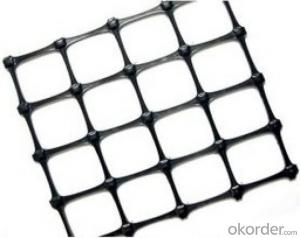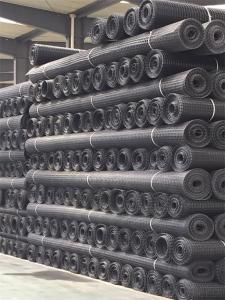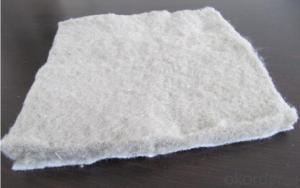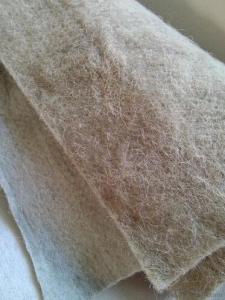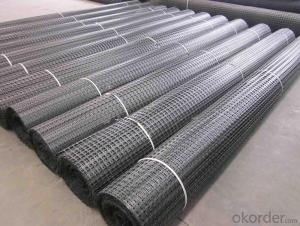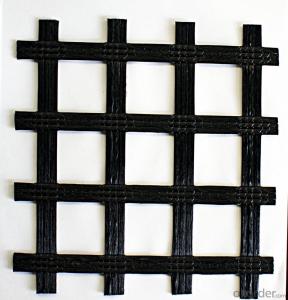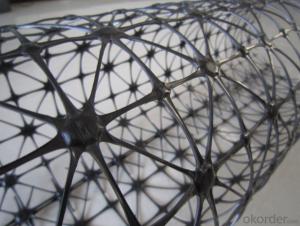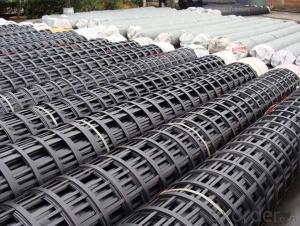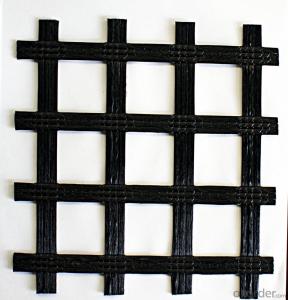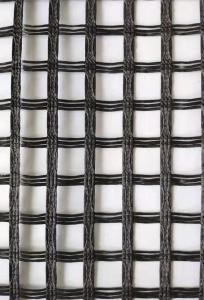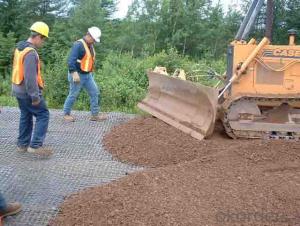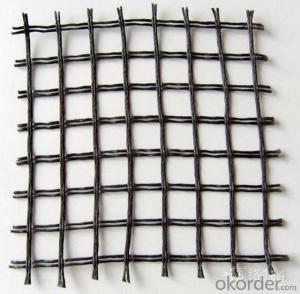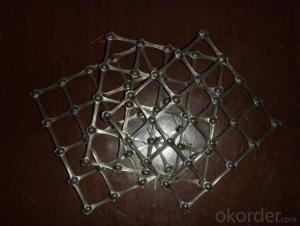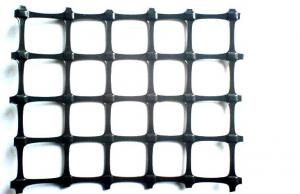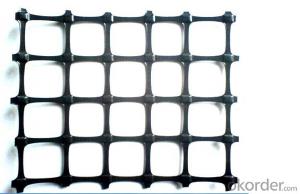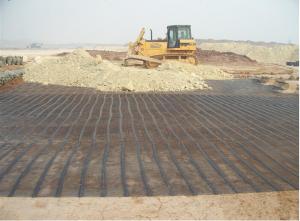Geogrids Company PP Biaxial Geogrid / Fiberglass Geogrid / Polyester Geogrid
- Loading Port:
- China main port
- Payment Terms:
- TT OR LC
- Min Order Qty:
- 5000 m²
- Supply Capability:
- 1000000 m²/month
OKorder Service Pledge
OKorder Financial Service
You Might Also Like
Introduction of Fiberglass Geogrid:
Fiberglass geogrid is based on fiberglass woven cloth coated with modified bitumen or PVC, it was developed to address the problem of pavement cracking on highways, roads and runways, driven by a need to reduce cost for infrastructure maintenance and repair.
It is characterized by high tensile strength in axial and lateral directions, low stretch rate, alkali-resistance, low temperature- resistance, as well as convenience in construction and low price. It can be used on pitch pavement to prevent cracks and prolong pavement service life. It also can be used as a basal reinforcement material for hillsides, reservoirs, harbors, ports, water channels, seawalls, etc.
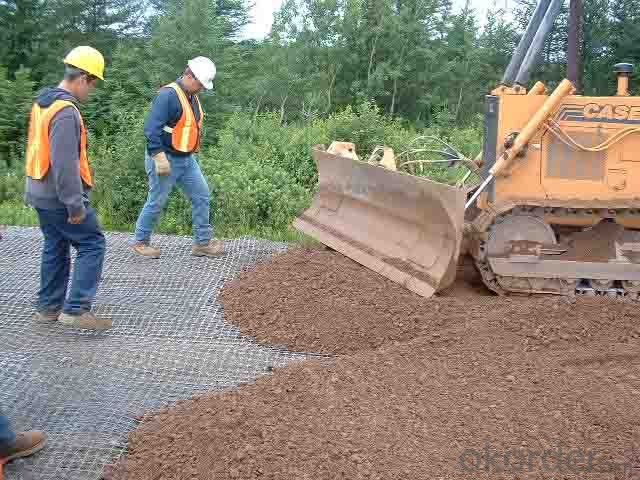

Introduction of PP Biaxial Geogrid:
Biaxial geogrid, made of high molecular polymer, is extruded into sheet and then punched into regular mesh pattern, and finally stretched in longitudinal and transverse directions.
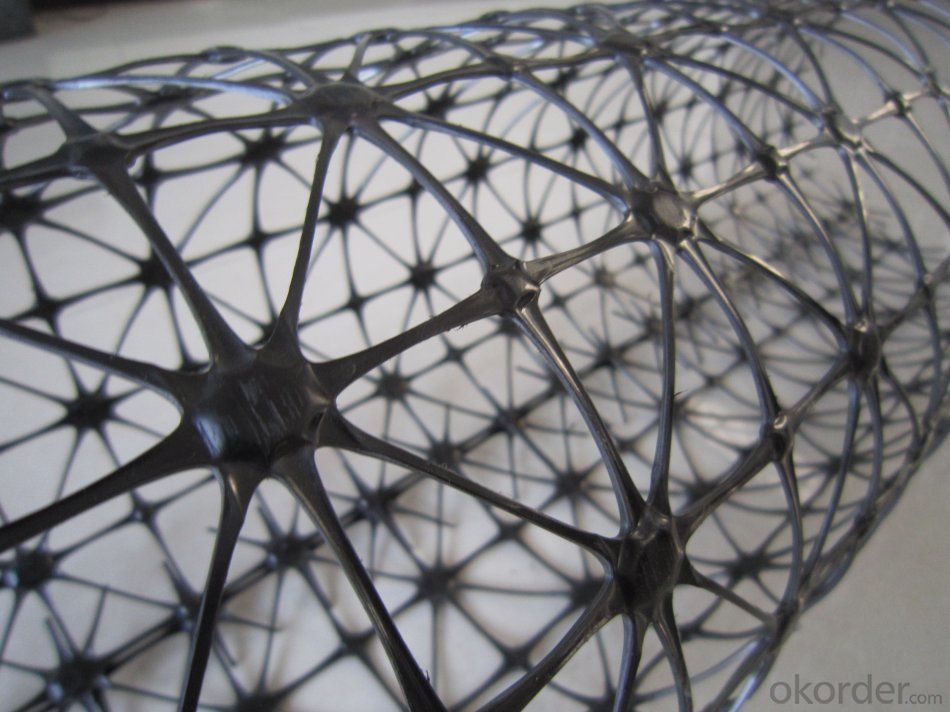
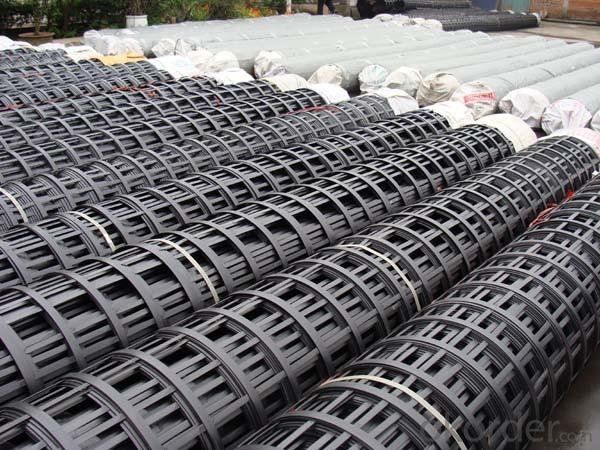
Features of PP Biaxial Geogrid:
1. With high tensile strength in longitudinal and transversedirections
2.This structure can provide an chain system of more effective force bearing and spreading for the soil.
Application of PP Biaxial Geogrid:
Mainly applied in highway, railway, slope protecting projects etc.
1)strengthen land loading capacity and extend its service life.
2) convenient to construct ; reducing project cost and maintenance cost.
FAQ:
Q1: What is your minimum order quantity?
A:The minimum order quantity is 5000 ,but it is negotiable.
Q2:What is your payment terms?
A: T/T,Western Union,Paypal,L/C...
Q3:What is your delivery time?
A:Production time usually costs 2-20 days.
Waiting to cooperate with you!
- Q: Can geogrids be used in soil stabilization for slopes?
- Yes, geogrids can be used in soil stabilization for slopes. Geogrids provide reinforcement to the soil, increasing its stability and preventing erosion. They are commonly used in civil engineering projects for slope stabilization to enhance the overall strength and integrity of the soil.
- Q: What is the difference between bidirectional geogrid and unidirectional high strength geogrid
- This material is characterized by a very high tensile strength and tensile modulus in the tensile direction, which provides an ideal chain system for soil, and low tensile. It is an ideal reinforcement material at present.
- Q: Are geogrids effective in reducing soil erosion?
- Yes, geogrids are effective in reducing soil erosion. Geogrids are a type of synthetic material that is placed on the surface of the soil to stabilize it and prevent erosion. They create a strong and stable barrier that helps to retain the soil in place, even under heavy rainfall or slope conditions. Additionally, geogrids can enhance the strength and load-bearing capacity of the soil, making them an effective solution for erosion control in various applications such as road construction, embankments, and retaining walls.
- Q: What are the cost considerations for using geogrids in construction projects?
- Some cost considerations for using geogrids in construction projects include the initial cost of purchasing and installing the geogrids, the potential cost savings in reducing the amount of traditional materials needed, the cost of maintenance and repair over time, and the overall long-term cost-effectiveness compared to alternative construction methods.
- Q: Can geogrids be used in erosion control on slopes and hillsides?
- Yes, geogrids can be used in erosion control on slopes and hillsides. Geogrids are widely used for reinforcement and stabilization purposes in such areas to prevent soil erosion and retain the stability of the slope or hillside. They provide additional support to the soil, reducing the risk of landslides and erosion by improving the structural integrity of the slope.
- Q: How do geogrids improve the performance of reinforced soil slopes in seismic areas?
- Geogrids improve the performance of reinforced soil slopes in seismic areas by providing additional stability and strength to the soil structure. They work by distributing and transferring the forces generated during an earthquake throughout the soil mass, reducing the risk of slope failure. Geogrids also enhance the overall tensile strength of the soil, preventing excessive deformation and maintaining the integrity of the slope.
- Q: What is the meaning of reinforced subgrade? Is there a geogrid type on the road?
- Reinforced embankment subgrade usually with earthwork material, application is very flexible, such as mesh woven with the willow branches can also do the laying of reinforcement materials in the soil, reinforced net can also, but each has advantages and disadvantages, according to the actual needs of the design.
- Q: What are the long-term maintenance requirements for geogrids?
- The long-term maintenance requirements for geogrids are generally minimal. Once installed properly, geogrids do not require frequent or extensive maintenance. However, periodic inspections should be conducted to ensure the geogrids are functioning effectively and to identify any potential issues such as damage or excessive soil accumulation. In case of any problems, repairs or replacements may be necessary to maintain the geogrids' performance and longevity. Overall, regular monitoring and timely interventions are crucial for ensuring the long-term effectiveness of geogrids.
- Q: How do geogrids enhance the stability of steep fill slopes?
- Geogrids enhance the stability of steep fill slopes by providing reinforcement and reducing soil erosion. They act as a barrier, distributing the load more evenly across the slope and increasing the overall strength of the soil. This prevents the slope from sliding or collapsing under the weight of the fill material. Additionally, geogrids improve drainage and prevent water accumulation, which is crucial in maintaining slope stability.
- Q: How does a geogrid work?
- A geogrid works by providing reinforcement and stabilization to soil or other materials. It is typically made of high-strength polymers and has a grid-like structure. When placed within the soil, the geogrid interlocks with the particles, creating a composite material that has improved load-bearing capacity. This helps to distribute forces and prevent the movement or deformation of the soil. Overall, a geogrid enhances the stability and durability of the soil structure, making it suitable for various applications such as road construction, erosion control, and retaining walls.
Send your message to us
Geogrids Company PP Biaxial Geogrid / Fiberglass Geogrid / Polyester Geogrid
- Loading Port:
- China main port
- Payment Terms:
- TT OR LC
- Min Order Qty:
- 5000 m²
- Supply Capability:
- 1000000 m²/month
OKorder Service Pledge
OKorder Financial Service
Similar products
Hot products
Hot Searches
Related keywords
